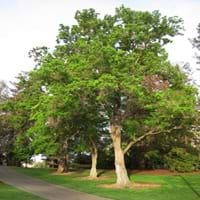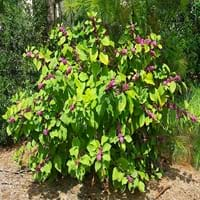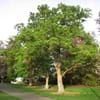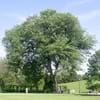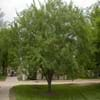Life Span
Perennial
Perennial
Origin
Eastern Asia, China
Southeastern United States, South-Central United States
Types
Candleberry tree
Not Available
Habitat
Saline Soils, Upland, Upland soils
bottomlands, Coastal Regions, Moist woods, pine woods, Slopes, Swamps, Thickets, Woods
USDA Hardiness Zone
8-10
6-11
Sunset Zone
H2, 8, 9, 12, 13, 14, 15, 16, 18, 19, 20, 21
3a, 3b, 4, 5, 6, 7, 8, 9, 14, 15, 16, 17, 18, 19, 20, 21, 22, 23, 24
Habit
Oval or Rounded
Arching/Fountain-shaped
Minimum Height
Not Available
Minimum Width
Not Available
Flower Color
Yellow
Pink, Lavender
Flower Color Modifier
Bicolor
Not Available
Fruit Color
White, Ivory
Purple, White
Leaf Color in Spring
Green
Light Green
Leaf Color in Summer
Green
Light Green
Leaf Color in Fall
Yellow, Red, Orange
Yellow green, Tan
Leaf Color in Winter
Not Available
Not Available
Leaf Shape
Heart-shaped
Elliptic
Plant Season
Spring, Summer, Fall
Spring, Summer, Fall
Sunlight
Full Sun
Full Sun, Partial Sun, Partial shade
Type of Soil
Clay, Loam, Sand
Clay, Loam, Sand
The pH of Soil
Acidic, Neutral, Alkaline
Acidic, Neutral
Soil Drainage
Average
Well drained
Bloom Time
Spring
Early Summer, Summer, Late Summer
Tolerances
Cold climate, Drought, Pollution, Salt
Not Available
Where to Plant?
Ground
Ground, Pot
How to Plant?
Grafting, Seedlings, Stem Planting, Transplanting
Cuttings, Seedlings
Plant Maintenance
Medium
Medium
Watering Requirements
Average Water Needs, Medium, Requires watering in the growing season
Medium
In Summer
Lots of watering
Lots of watering
In Spring
Moderate
Moderate
In Winter
Average Water
Average Water
Soil pH
Acidic, Neutral, Alkaline
Acidic, Neutral
Soil Type
Clay, Loam, Sand
Clay, Loam, Sand
Soil Drainage Capacity
Average
Well drained
Sun Exposure
Full Sun
Full Sun, Partial Sun, Partial shade
Pruning
Remove damaged leaves, Remove dead leaves, Remove dead or diseased plant parts, Remove deadheads
No need to prune
Fertilizers
fertilize in growing season, Less fertilizing, Nitrogen
All-Purpose Liquid Fertilizer, fertilize in spring, Use a fertilizer ratio of 16-4-8
Pests and Diseases
Insects, Red blotch
Red blotch
Plant Tolerance
Cold climate, Drought, Salt
Not Available
Flowers
Insignificant
Yes
Flower Petal Number
Single
Single
Foliage Texture
Medium
Coarse
Foliage Sheen
Matte
Matte
Attracts
Not Available
Birds, Butterflies
Allergy
Nausea, Toxic, Vomiting
Poisonous
Aesthetic Uses
Landscape Designing
Showy Purposes
Beauty Benefits
No Beauty Benefits
Not Available
Environmental Uses
Absorbs greenhouse gases, Absorbs huge amounts of CO2, Air purification, Amazing growth rate, Erosion control, Food for insects, Forms dense stands, Nesting sites for birds, No fertilizer, pesticides, or herbicides needed, Prevent Soil Erosion, Shadow Tree, Shelter for wildlife, Soil protection, soil stabilisation, Used to establish native woodland, Very little waste, Wildlife, Windbreak
Air purification, Food for animals, Food for birds
Medicinal Uses
Boils
Colic, Dysentry, Fever, Malaria, Rheumatism, Stomach pain
Part of Plant Used
Fruits, Leaves, Seeds
Flowers, Root
Other Uses
Employed in herbal medicine, Showy Purposes, Used as firewood, Used for its medicinal properties
Showy Purposes, Used as Ornamental plant, Used for bedding in gardens, Used for fragrance, Used for its medicinal properties, Used for Landscaping
Used As Indoor Plant
No
No
Used As Outdoor Plant
Yes
Yes
Garden Design
Feature Plant, Shade Trees, Street Trees
Foundation, Mixed Border, Screening, Wind Break
Botanical Name
TRIADICA sebifera
CALLICARPA americana
Common Name
Chinese Tallow
American beautyberry , French mulberry
In Hindi
चीनी तेल
American Beautyberry Tree
In German
chinesisch Talg
Amerikanische Schönbaum
In French
chinesisch Talg
Américaine Beautyberry Arbre
In Spanish
suif chinois
Americana beautyberry Árbol
In Greek
κινέζικο ζωικό λίπος
American Beautyberry Δέντρο
In Portuguese
sebo chinesa
Árvore Beautyberry Americana
In Polish
chiński łój
Amerykański pięknotka Drzewo
In Latin
Chinese adipe
Latin Beautyberry ligno
Phylum
Embryophyta
Magnoliophyta
Class
Magnoliopsida
Magnoliopsida
Order
Malpighiales
Lamiales
Family
Euphorbiaceae
Verbenaceae
Genus
Triadica
Callicarpa
Clade
Angiosperms, Eudicots, Rosids
Angiosperms, Asterids, Eudicots
Tribe
Hippomaneae
Not Available
Subfamily
Euphorbioideae
Ranunculoideae
Number of Species
Not Available
Not Available
Season and Care of Chinese Tallow and American Beautyberry
Season and care of Chinese Tallow and American Beautyberry is important to know. While considering everything about Chinese Tallow and American Beautyberry Care, growing season is an essential factor. Chinese Tallow season is Spring, Summer and Fall and American Beautyberry season is Spring, Summer and Fall. The type of soil for Chinese Tallow is Clay, Loam, Sand and for American Beautyberry is Clay, Loam, Sand while the PH of soil for Chinese Tallow is Acidic, Neutral, Alkaline and for American Beautyberry is Acidic, Neutral.
Chinese Tallow and American Beautyberry Physical Information
Chinese Tallow and American Beautyberry physical information is very important for comparison. Chinese Tallow height is Not Available and width Not Available whereas American Beautyberry height is 182.88 cm and width 182.88 cm. The color specification of Chinese Tallow and American Beautyberry are as follows:
Chinese Tallow flower color: Yellow
Chinese Tallow leaf color: Green
American Beautyberry flower color: Pink and Lavender
- American Beautyberry leaf color: Light Green
Care of Chinese Tallow and American Beautyberry
Care of Chinese Tallow and American Beautyberry include pruning, fertilizers, watering etc. Chinese Tallow pruning is done Remove damaged leaves, Remove dead leaves, Remove dead or diseased plant parts and Remove deadheads and American Beautyberry pruning is done No need to prune. In summer Chinese Tallow needs Lots of watering and in winter, it needs Average Water. Whereas, in summer American Beautyberry needs Lots of watering and in winter, it needs Average Water.
